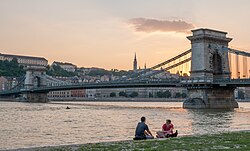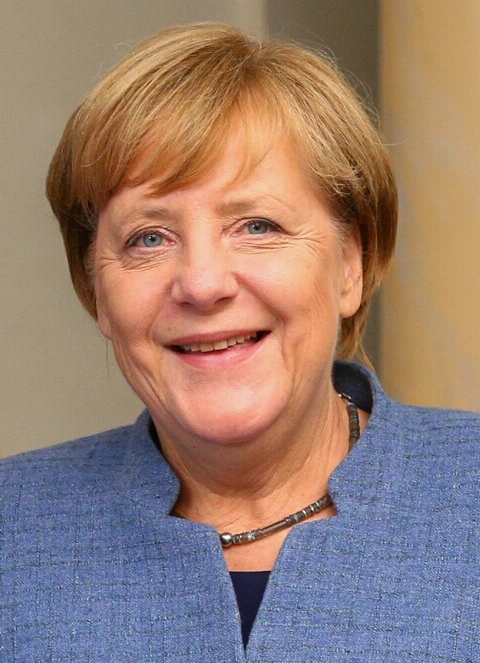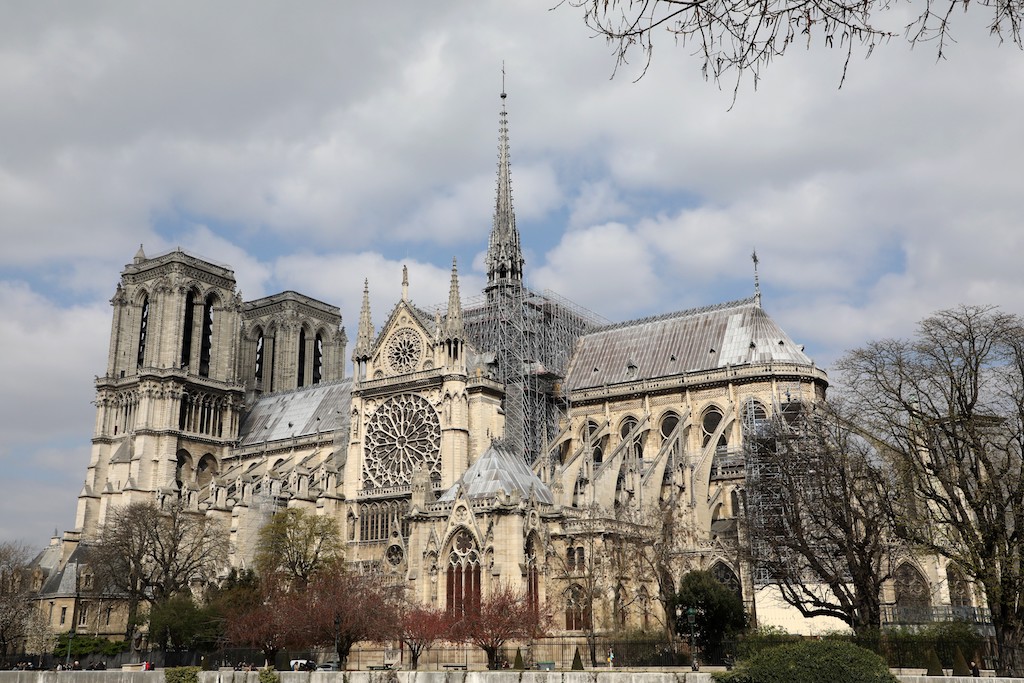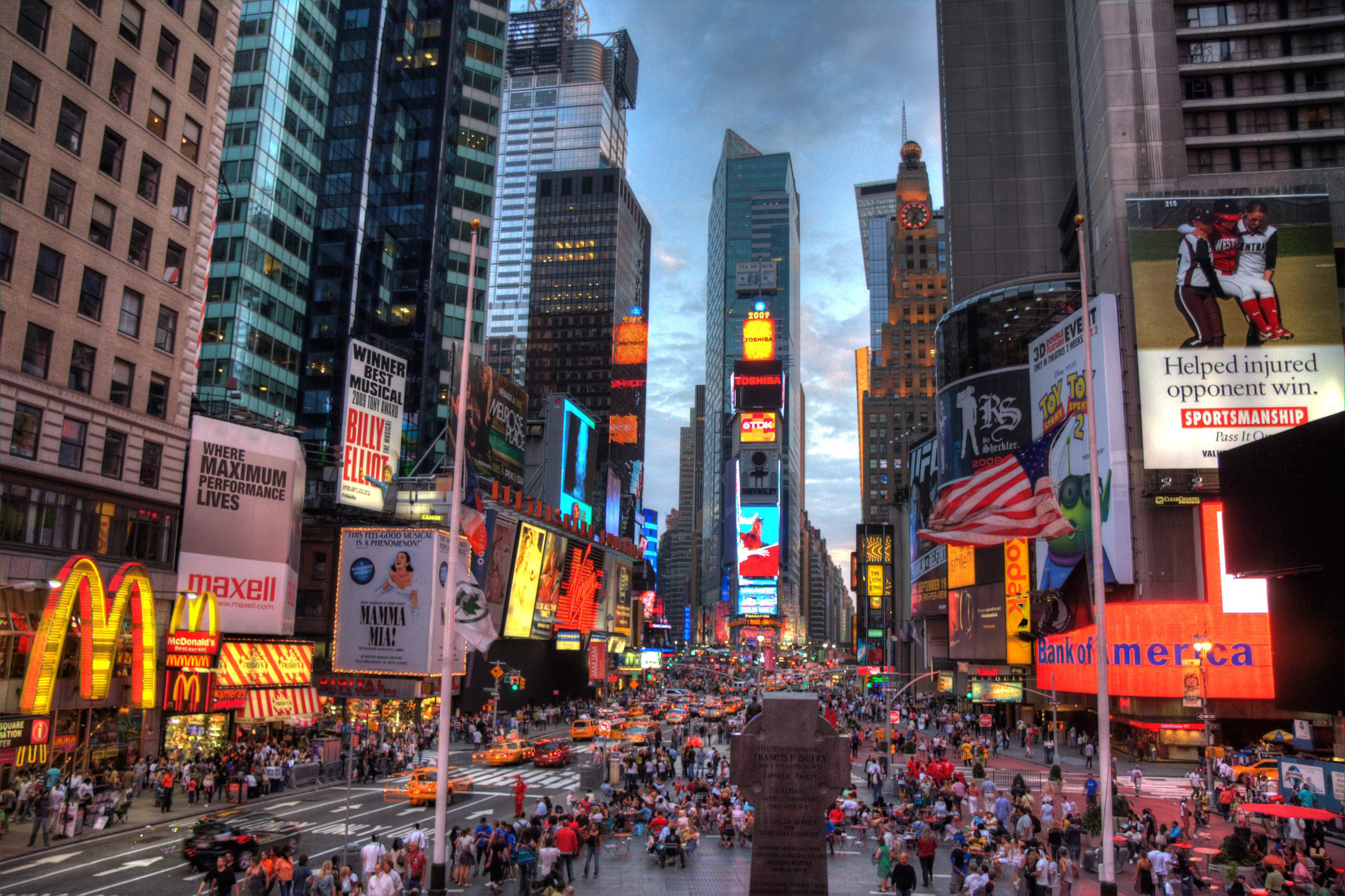


Geography Part 3: The Continents (The Remaining Parts)
Europe
Europe is found in the Northern Hemisphere. It is bordered by the Arctic Ocean to the north, the Atlantic Ocean to the west, Asia to the east, and the Mediterranean Sea to the south. The westernmost part of Euraisa is found in Europe. Since about 1850, Europe is considered to be separated from Asia by the watershed divides of the Ural and Caucasus Mountains, the Ural River, the Caspian, and the Black Seas (including the waterways of the Turkish Straits). Europe's borders have been defined differently throughout classical antiquity. The division of Eurasia into two continents reflects East-West cultural, linguistic and ethnic differences which vary on a spectrum rather than with a sharp dividing line. The geographic border between Europe and Asia does not follow any state boundaries: Turkey, Russia, Azerbaijan, Georgia and Kazakhstan are transcontinental countries. Spain is also transcontinental in that its main portion is on the Iberian peninsula (Europe) while pockets of Spanish territory are located across the Strait of Gibraltar on North African territory (i.e. mainly Melilla, Ceuta, and the Canary Islands in the Atlantic Ocean). Europe has 3,393,000 square miles of 2 percent of the Earth's surface (6.8% of land area). Europe is divided into politically 50 sovereign states of which the Russian Federation is the largest and most populous spanning 39& of the continent and comprising 15% of its population. Europe has 741 million people. That is about 11 percent of the world's population as of 2016. The European climate is affected by warm Atlantic currents that temper winters and summers on much of the continent. Further from the sea, seasonal differences are more noticeable than close to the coast. The largest urban cities in Europe are Moscow, Paris, Istanbul, Madrid, Barcelona. Saint Petersburg, Rome, Berlin, and Milan.
in Europe, there is the mostly temperate climate zones. It has many westerlies. The climate is milder in comparision to other areas of the same latitude around the globe due to the influence of the Gulf Stream. The Gulf Stream causes Europe to be warmer and wetter. The Gulf Stream not only carries warm water to Europe's coast but also warms up the prevailing westerly winds that blow across the continent from the Atlantic Ocean. That is why Napels can have 61 degrees as an average temperature while New York City has 54 degrees in its average but both cities being on almost the same lattitude. Berlin, Germany; Calgary, Canada; and Irkutsk, in the Asian part of Russia, lie on around the same latitude; January temperatures in Berlin average around 8 °C (14 °F) higher than those in Calgary, and they are almost 22 °C (40 °F) higher than average temperatures in Irkutsk. Europe is colder in the north than the south. The climate is more oceanic in the west and less so in the east. Europe has the biomes of a tundra, alpine tundra, taiga, montane forest, temperate broadleaf forest, Mediterranean forest, temperate, steppe, and dry steppe. Mount Elbrus in Russia is the highest mountain in Europe. The formation of the Baltiic Shield and the Sarmatian caton has been around 2.25 billion years ago. There was the Volgo Uralia shield. Around 440 million years ago Euramerica was formed from Baltica and Laurentia; a further joining with Gondwana then leading to the formation of Pangea. Around 190 million years ago, Gondwana and Laurasia split apart due to the widening of the Atlantic Ocean. Finally, and very soon afterwards, Laurasia itself split up again, into Laurentia (North America) and the Eurasian continent. The land connection between the two persisted for a considerable time, via Greenland, leading to interchange of animal species. From around 50 million years ago, rising and falling sea levels have determined the actual shape of Europe, and its connections with continents such as Asia. Europe's present shape dates to the late Tertiary period about five million years ago.


There are the Scottish Highlands, plains in Hungary, the Ural Mountains, the Pyrenees, and the Scandinavian Mountains. Much of Europe is a mixed forest. Brown bears, wolves, and other animals exist in Europe. The European bison is found in Poland and Belarus. There are wild cats, foxes, jackals, and martens. Europe has the largest economy as a continent in the world. It is the richest region in terms of assets under management with over $32.7 trillion compared to North America's $27.1 trillion in 2008. Europe is the wealthiest region. There is a variation of wealth from the richer states in the West and the poorer states in Central plus Eastern Europe. Europe has a high population density, second to Asia. It has low population growth. Most Europeans are Indo-European. There are Africans, Asians, Muslims, and other ethnic groups in Europe. Over the last centuries, Europe has been massively secularized. Many European nations have a decline of church membership. Many people don't believe in a religious belief system. The 2010 Eurobarometer survey found that, on average, 51% of the citizens of the EU member states state that they believe there is a God, 26% believe there is some sort of spirit or life force and 20% don't believe there is any sort of spirit, God or life force. 3% declined to answer. About 60 percent of people in the UK are Christians. Chairnity is the largest religion in Europe. According to a survey published in 2010, 76.2% of Europeans identified themselves as Christians. Catholics were the largest Christian group in Europe, accounting for more than 48% of European Christians. The second-largest Christian group in Europe was the Orthodox, who made up 32% of European Christians. And about 19% of European Christians were part of the Protestant tradition. Many people are agnostic in France. Lutherans, Anglican people, and Reformed faith members are in Europe. There is a minority of Muslims in Europe too. Muslims are six percent of the European population. They are found heavily in the Balkans, Eastern Euorpe, and parts of Western Europe. Followers of Judaism, Hinduism, and Buddhism are minority religions as well. There are 92 million Russians who reside in Europe along with 72 million Germans. There are many ethnic groups like the Scots, Welsh, Bretons, and the Basques. Most people in Europe speak Indo-European languages. They are Romance, Germanic, Baltic, Slavic, Albanian, Celtic, and Greek. Some speak Turkic languages. Most Europeans speak German, French, English, Italian, Spanish, Polish, Romanian, Russian, and Dutch. There is a large black population in Europe too from the UK to Italy plus France. Black people live in Germany and Greece as well. Most of Europe is in a mode of sub-replacement fertility, which means that each new(-born) generation is becoming less populous than the older. Nonetheless most European countries still have growing populations due to immigration, population momentum and increases in life expectancy. Some current and past factors in European demography have included emigration, ethnic relations, economic immigration, a declining birth rate and an ageing population.



European culture is influenced by ancient Greece, ancient Rome, the Middle Ages, the Renaissance, the Enlightenment, and other movements. Like many areas, Europe's culture is not monolithic. There are different music, art, dance, and cuisine found in different regions of Europe. Soccer is the most popular sport in Europe. Rugby, cricket, ice hockey, basketball, American football, gold, Motorsport, cycling, tennis, and golf are common in Europe as well. Art is found in different eras of Eurpe. Prehistoric art and classical art dealt with statues, images, sculptures, and architecture. Art as diverse as Picasso's paintings to Byzantine art are found in the continent. Wine, pasta, chocolate, yogurt, and other foods are commonplace in Europe. Like many places, European foods has been influenced by foods from Asia, America, Africa, and other parts of the world. The earliest definite examples of needles originate from the Solutrean culture, which existed in France and Spain from 19,000 BC to 15,000 BC. The earliest dyed flax fibers have been found in a cave the Republic of Georgia and date back to 36,000 BP. Fashion in Europe has been celebrated in conventions, modeling situations, and by many other activities.


Oceania
Oceania is a geographic region spanning the Eastern and Western hemisphere. It has been neglected by some, but it is very important part of humanity. It has Australia, Melanesia, Micronesia, and Polynesia. It has a land area of 3,291,903 square miles, and it has 40,117,432 people. It is smaller than Antarctica in land size, but it’s bigger than it in terms of population. It has a diversity of cultures and histories. It has the highly developed areas and the more remote locations. Oceania has a diverse mix of economies from the highly developed and globally competitive financial markets of Australia and New Zealand, which rank high in quality of life and human development index, to the much less developed economies that belong to countries such as Kiribati and Tuvalu, while also including medium-sized economies of Pacific islands such as Palau, Fiji and Tonga. The largest and most populous country in Oceania is Australia, with Sydney being the largest city of both Oceania and Australia. Japan, America, and other nations control many islands in the region of Oceania. Oceania dominates parts of the Pacific Ocean. The Australasian ecozone and the Pacific ecozone including New Zealand have a diversity of animal plus planet species. Aboriginals and Austronesian people traveled from Africa into Oceania over the course of thousands of years.
Some Austronesian people live in New Guinea. Micronesian people had the early culture found at Saipan back in 1,500 B.C. Polynesian peoples had large structures made at Easter Island, and they are came from the sea-migrating Austronesian peoples. Oceanian islands are of four basic types: continental islands, high islands, coral reefs and uplifted coral platforms. High islands are of volcanic origin, and many contain active volcanoes. Among these are Bougainville, Hawaii, and Solomon Islands. Australia and New Zealand have mountain ranges, tropical rainforests, and coastal uplands. The Pacific Islands are ruled by a tropical rainforest and tropical savanna climate. In the tropical and subtropical Pacific, the El Niño Southern Oscillation (ENSO) affects weather conditions. In the tropical western Pacific, the monsoon and the related wet season during the summer months contrast with dry winds in the winter which blow over the ocean from the Asian landmass. November is the only month in which all the tropical cyclone basins are active. In Oceania, the largest cities in terms of population are Sydney, Melbourne, Brisbane, Perth, Auckland, Adelaide, the Gold Coast, Newcastle, Canberra, and Wellington. Most people of Oceania from Melanesia to Australia are Christians. Some follow traditional religions. Many of the Baha’i faith adherents live in Samoa. Languages from different regions are expressed like Malay, Aboriginal languages, English, French, Spanish, Polynesian languages, etc. Art and sports like rugby are very common in the region. Australia has hosted two Summer Olympics: Melbourne 1956 and Sydney 2000. Therefore, Oceania remains a totally great region of the world society.


Antarctica
The geography of Antarctica is very unique. It is the southernmost continent on Earth. As found at the South Pole, it is well known to explorers, scholars, and everyday people. It is filled with 5,500,000 square miles. It's the fifth largest continent and nearly twice the size of Australia. About 1,106 people live there. On average, Antarctica is the coldest, driest, and windiest continent on Earth. It is mostly a polar desert. It has an annual precipitation of 20 cm (7.9 in) along the coast and far less inland. The temperature in Antarctica has reached −89.2 °C (−128.6 °F) (or even −94.7 °C (−135.8 °F) as measured from space), though the average for the third quarter (the coldest part of the year) is −63 °C (−81 °F). Anywhere from 1,000 to 5,000 people reside throughout the year at research stations scattered across the continent. Organisms native to Antarctica include many types of algae, bacteria, fungi, plants, protista, and certain animals, such as mites, nematodes, penguins, seals and tardigrades. Vegetation, where it occurs, is tundra. It is the last region on Earth discovered in recorded history. In modern times, it was only in 1820 when it was seen. This was when the Russian expedition of Fabian Gottlieb von Bellingshausen and Mikhail Lazarev on Vostok and Mirny sighted the Fimbul ice shelf. The continent, however, remained largely neglected for the rest of the 19th century because of its hostile environment, lack of easily accessible resources, and isolation. In 1895, the first confirmed landing was conducted by a team of Norwegians. Antarctica is a de facto condominium, governed by parties to the Antarctic Treaty System that have consulting status. Twelve countries signed the Antarctic Treaty in 1959, and thirty-eight have signed it since then. The treaty prohibits military activities and mineral mining, prohibits nuclear explosions and nuclear waste disposal, supports scientific research, and protects the continent's ecozone. Ongoing experiments are conducted by more than 4,000 scientists from many nations. Most of Antarctica is covered by the Antarctic ice sheet. It hold 70% of the world's fresh water. Vinson Massif, the highest peak in Antarctica at 4,892 m (16,050 ft), is located in the Ellsworth Mountains. Antarctica contains many other mountains, on both the main continent and the surrounding islands. Mount Erebus on Ross Island is the world's southernmost active volcano. Antarctica evolved the the super-continent Gondwana. It broke apart to form Antarctica. It can get from 41 to 59 degrees during the summer. Much of Antarctica is more than 9,800 feet above sea level. That makes it colder than the Arctic as temperature decreases with elevation in the troposphere. Global warming has increased the surface temperature of the continent. The ozone zone has been depleted too. Antarctica is divided into West Antarctica and East Antarctica.

Conclusion
Living on this Earth for almost 40 years has certainly made me aware of many things. Learning about the various continents of the world certainly has given me more insights about how the world is. Geography is not just about population growth or landscapes. It is about dealing with the social and cultural structures of populations. It is about the migration of animals in the world. It is about demographics and how cultures evolve over thousands of years. First and foremost, it is important to reiterate that Africa is the Motherland of humanity. All human beings of every color and of every background originated from Africa. We know that migration and environmental, geographic locations has influenced humanity to develop different types of civilizations. Yet, we have our similarities along with our differences. We all share one human origin, we all have families, we all share one Earth, and we all have belief systems (whether spiritual, secular, or otherwise). We can never be naive our the realities of our world today. We witness climate change in a scale never before scene in human history. There are massive flooding in many places of the globe, homes have been destroyed by hurricanes, and record high temperatures are found globally as well. That is why nations internationally are working in trying to solve the problem. Political tensions, coups, etc. exist. You have progressives and conservatives fighting for the soul of the world as found in America, Brazil, Bolivia, Germany, Africa, and other places of the world. Being on the side of democratic, revolutionary change is very important. 2020 will be one of the most important years in world history. As we see what will happen in that year, we should never lose faith. History teaches us that faith plus action can cause miraculous change in the Universe. In that sense, we must continue forward in believing in the Dream plus advance justice.
By Timothy
No comments:
Post a Comment